By David Fear in the May-June 2016 Issue
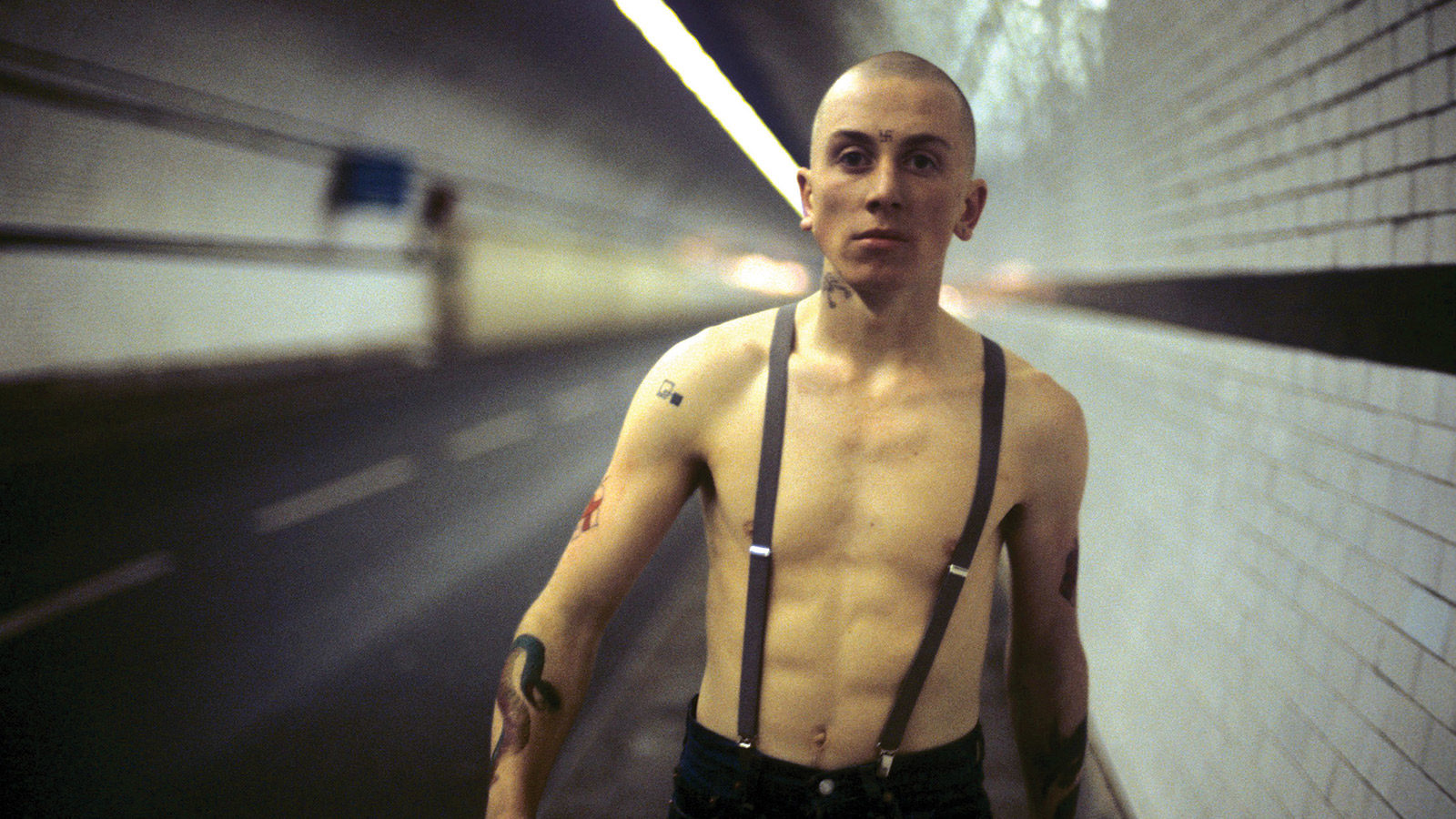
Close to the Bone
British director Alan Clarke brought tough love and fearless technique to a breathtaking range of stories
You can say as much with a whisper as with a scream, but the latter is better for getting people’s attention—for waking them up. When you’re a filmmaker as savvy as Alan Clarke and you have a subject as rich as the state of the sun-has-long-set British empire, you understand what a sharp arrow this is to pull out of your quiver. It’s tempting, in fact, to reduce this extraordinary artist’s work to a supercut of cris de coeur, a marathon of primal outbursts: Tim Roth’s skinhead, shirtless and in suspenders, yelling at passing cars in Made in Britain (82); Ray Winstone’s borstal bad boy, letting go a shriek that kickstarts a lunchroom riot in Scum (77); Gary Oldman’s hooligan gang leader, riling up the troops for a group portrait in The Firm (89); Andrew Wilde’s maniacal screech aimed straight to the camera in Road (90).
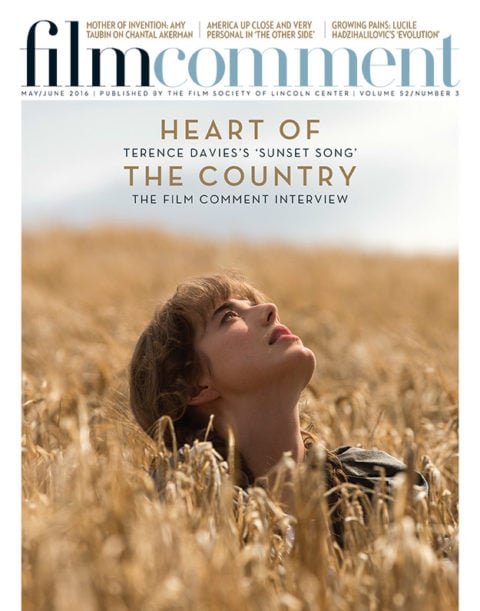
From the May-June 2016 Issue
Also in this issue
It’s been the party line for years: Alan Clarke, righteous poet of anger and volume. Despite having come out of the remarkably fertile mid-’60s moment when British television fostered a generation of socially conscious, singularly prickly subversives (Ken Loach, Mike Leigh, Peter Watkins), Clarke’s reputation rests primarily on three late-period TV dramas designed to test viewers’ taboo tolerances, and one formalist experiment. These were the films that remained in circulation, with the first three in particular suggesting that the Cheshire-born son of a bricklayer primarily made how-to templates for hard men in training. For a generation of young English males, Scum, The Firm, and Made in Britain are lad-culture classics; Oldman has said fans have quoted entire reams of Firm dialogue off the top of their head to him, while Roth claimed that his racist antihero Trevor “was on T-shirts . . . I think I was Oi! Man of the Year at one point.” And Clarke’s infamous 1989 short film about killing, Elephant, became a touchstone for modern cine-provocateurs: there’s a reason that Gus Van Sant named his free-form Columbine drama after it, and why Harmony Korine declared the Liverpudlian to be his hero. This was the guy who kicked against the pricks and pushed the envelope, the rebel’s rebel.
But for those who saw Clarke’s full body of work—who got to see him develop in real time on Play for Today and other BBC and ITV broadcasts throughout the ’70s and ’80s—a much richer, clearer portrait of the man as a tonally varied artist came into focus. Dissent & Disruption: The Complete Alan Clarke, the first major retrospective of his TV work in over a decade, finally gives film-goers a chance to see why his peer Stephen Frears declared that “he may have been the best of us.” Yes, Clarke gave white supremacists, teenage wastelanders, and Thatcher-era soccer vandals a large-platform cage in which to rage. But his compassion for, and interest in, social misfits and outcasts also extended to pathological liars, PTSD-afflicted soldiers, sexually confused adolescents, Russian dissidents, runaways, incest survivors, underage drug addicts, and, just for good measure, a Brechtian poet played by none other than David Bowie. This disrupts the narrative that he was nothing but the human embodiment of a two-fingered salute. It proves that his whispers were just as earth-shattering as his screams.
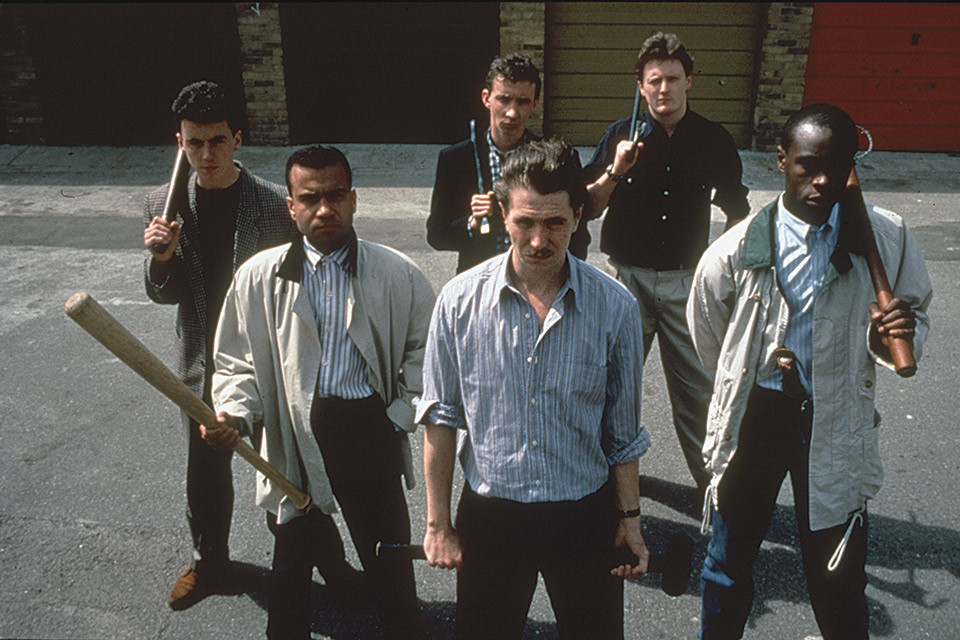
The Firm
Unlike many of his British contemporaries, Clarke fell into filmmaking by way of seeking adventure. He’d done his National Service in Hong Kong, traveled to Canada with some friends to mine for gold (!), and after getting injured, ended up at the film and TV program at Toronto’s Ryerson Institute of Technology. The maverick origin story, so different from both his fellow working-class storytellers and the middle-class directors straight out of university, immediately set him apart; it makes sense that he’d do things differently than the old-school-tie corps working at the Beeb once he’d arrived there. It’s hard to think of a typical director for hire who could have looked at the emotionally needy cipher at the center of The Hallelujah Handshake (70) and not simply seen a negative creep; Clarke and actor Tony Calvin turn the mysterious gentleman who lies, cheats, and steals his way through one church-based community after another as the ultimate damaged goods who nonetheless deserves sympathy. The same can be said for his teleplay on the David Bentley case, To Encourage the Others (72), which starts as a case study about Britain’s faulty judicial system and ends up as a devastating tragedy about someone unable to stand up against a rigged game. And Horace (72), about a dim-witted adult who strikes up a friendship with an angry teenager, doesn’t treat its mentally challenged protagonist as savant or punch line. He’s just another character who doesn’t fit in—a “hero” left sitting by himself, as his mother walks down a hallway in the background, in the sort of shot that immediately lets you know the man behind the camera can bust out visual panache when necessary.
And while it’s easy to compare Clarke to his fellow telly-superstar trio of Leigh, Loach, and Frears, it’s just asinstructive to compare Clarke with a trio of big-screen American filmmakers working in the ’60s and ’70s: John Cassavetes, Sidney Lumet, and Martin Scorsese. The sense of peeling back surfaces and prizing authenticity, even if things got messy; the knack for opening up theatrical works—Clarke had mounted productions of Shakespeare, Sartre, and Genet for the stage before Play for Today came calling—and facility for pinballing between stage realism and street-level regionalism; and finally, a surprising sense of tenderness despite a reputation for in-your-face kineticism. He may have worked in the small screen, but he deserves to be talked about in the realm of big-screen giants.
Nowhere is this more apparent than in Penda’s Fen (74), arguably the least characteristic of Clarke’s early works and the first sign that he could integrate cinematic instincts into modest dramas. That he specialized in stripped-down outsider portraiture and institutional critiques, all the while forging deep working relationships (notably with Horace’s writer Roy Minton, a key collaborator), was already a given. But his take on David Rudkin’s ambitious-to-a-fault script about a young man named Stephen dealing with sexual confusion and flirting with far-right conservatism keeps things steady—until it’s time to rock the boat. Named after the last Pagan regent of the realm, the movie watches as its young protagonist lusts after the local milk delivery boy and leads the student body through rousing sing-alongs of “Jerusalem.” Then devils begin to show up perched over Stephen’s bed, someone’s crotch bursts into flames, conversations with both ultra-English composer Edward Elgar and the titular king take place, and in a disturbing proto-Lynchian sequence, young girls gather with their parents by a tree stump and have their hands ritualistically cut off. God bless Ye Olde Weird England.
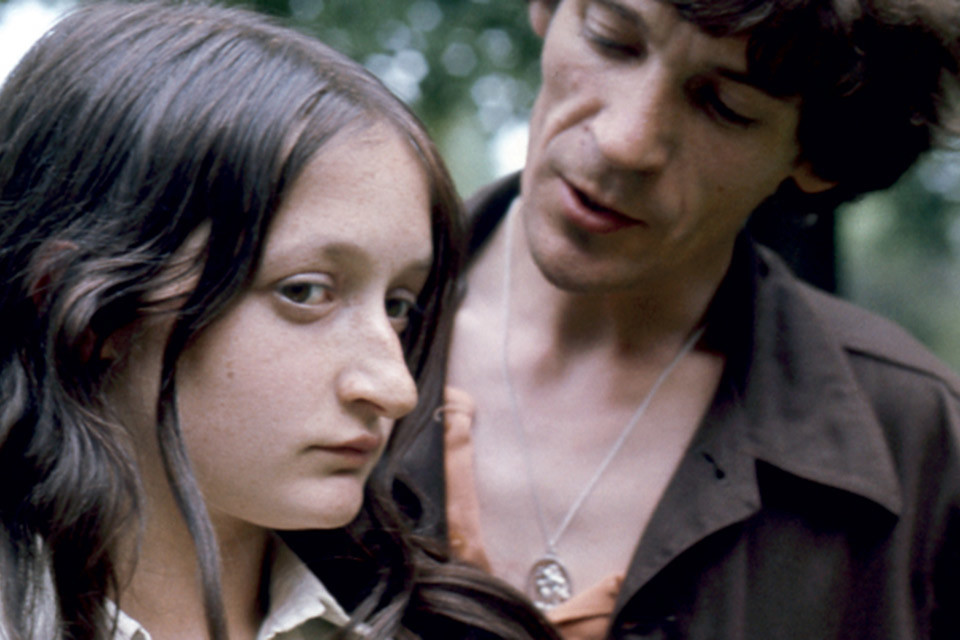
Diane
Rife with symbology and more blotter sheet than kitchen sink, it’s a what-the-fuck one-off in Clarke’s filmography that, when he was pressed, had him admitting that he had no idea what Rudkin was on about. But it’s a fever dream that’s just as political as Clarke’s more obvious critiques on capitalism (Beloved Enemy, 81) and socialism (Nina, 78) that he would make down the line. For all its surreal flourishes, Penda’s Fen doubles as a screed on national identity: what does English heritage mean in a rapidly changing world, who gets to own it, and what happens when history becomes a cudgel? With Stephen left alone on a hillside overlooking England’s mountains green, it’s a stunning work that leaves you wondering why he didn’t go into the Roeg/Russell mystic more often.
Yet two of the major revelations of Clarke’s newly available work conjure their most devastating sequences by dialing everything way down—and both revolve around incredible female performances. Diane (75) starts as a portrait of lower-working-class life on a West London housing estate, attaching itself to a mousy young woman who skulks around, eyes downcast and a sarcastic remark consistently on deck. Her father seems like the sort of drunken, dead-eyed character we’ve seen in countless dramas; it is not surprising, though no less depressing, when he cuffs Diane in public after he finds her in the company of local ruffians. Then Clarke sets up a long scene in which two teen boys on the estate discuss bicycle maintenance and kick a soccer ball around. It goes on and on, this odd non sequitur—until it cuts to Diane silently walking to a dumpster on the other end of the courtyard, and depositing a mysterious, newspaper-swaddled package into the bin. When it cuts back to the chatting lads, we spot the protagonist as a tiny figure in the background, going back into the building. The boys continue to go about their business for another minute. We know what it is in that bundle. We do not want to acknowledge it.
What comes next is an entire life story told in miniature, without melodramatics: Diane is now being held in custody as a vicar quizzes her about the baby she has discarded in the trash. It was stillborn, it “didn’t look right . . . something was wrong with its head,” and it was her father’s. She keeps asking how he is—Dad is being held elsewhere—and if she can see him. She recounts how she hid her pregnancy, and how she waited to dispose of her unwanted offspring until no one was around. “None of you knew,” she says. “I was too clever for all of you.” It is absolutely heartbreaking, made all the more so by the fact that the actress playing Diane, Janine Duvitski, never raises her voice. Recounting the moment in Richard Kelly’s invaluable oral-history bio on Clarke, she says that she practiced the scene at home numerous times, charting when to cry and when to break down. When it came time to film, the director asked her to just say the lines for a practice run, so he could figure out how to block everything. Duvitski gave an uninflected reading. He was filming it on the sly. That’s the only take he shot.
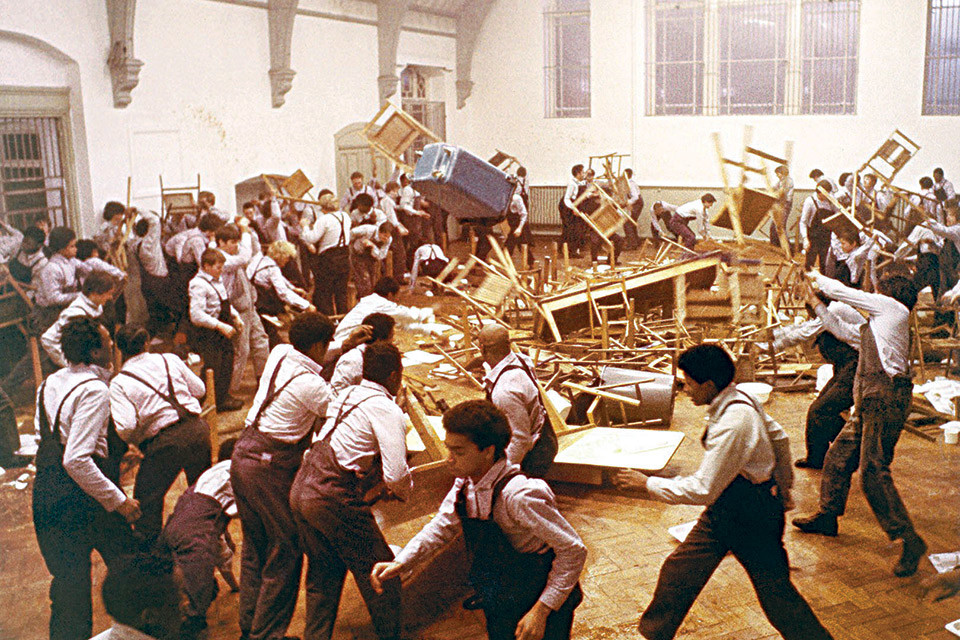
Scum
The BFI set’s second revelation, Christine (87), operates on a much more formalistic level. It hews closer to the Clarke we know—he’s discovered the steadicam and camera operator/collaborator John Ward at this point, and has perfected the long walking shots that had become a signature of his. (Long before the Dardenne Brothers established a bonding aesthetic based on tagging along directly behind their protagonists, Clarke had colonized the conceptual territory and planted a Union Jack flag.) We start off trailing the titular 13-year-old character (Vicky Murdock) as she walks down a pathway behind apartment buildings in what appears to be a middle-class neighborhood; a music box tinkles away over the soundtrack. Entering a house, the girl banters with another kid, who’s trying on a grown-up’s suits. Eventually, they both calmly take out syringes and shoot up heroin. You know those Hallmark cards featuring children in baggy adult clothes? Imagine those prepubescents put down their color-tinted roses and started doing horse in front of you.
This is not your usual shock-cinema horrorshow of drug addiction. In fact, as this scene repeats itself numerous times over the next 50 minutes, it’s the sheer banality of the scenario that hits you like a brick to the face. There is no statistics-filled disclaimer about where, how, and why this epidemic of underage narcotics usage is happening, no dead babies crawling on the ceiling, no do-you-know-where-your-children-are moralizing. Christine merely traipses from one plain household to the next and then small talk, shoot up, rinse, repeat. Murdock’s spare, Mouchette-like performance gives the film both its impact and a timeless sense of watching a numbed-out nightmare—she’s caught in a looped Afterschool Special running on smack time. The use of repetition and a complete lack of context make it feel like a dry run for Clarke’s Elephant two years later, in which boiling down a complex social problem (in the later film’s case, the Troubles in Northern Ireland) to nothing but activity—all effect, no cause—cuts away the chatter. Action is character here; when he got around to Elephant, he had dispensed with character altogether and gone straight to action.
Similarly, Clarke’s other great “statement” on the ongoing situation in Ireland, Contact (85), takes an old combat-movie chestnut of a platoon out on patrol and reduces everything to no-quarter-asked basics: boredom, violence, tension, and trauma. Sean Chapman (a vastly underrated actor in Clarke’s repertory company; his fatigued verbal standoff with Roth in Made in Britain a highlight of their shared filmography) is an English Army commander leading soldiers through maneuvers on the Belfast border. We’re introduced to him and his men when a speeding civilian car is stopped and its passengers immediately shot. We’ve no idea what they’ve done, whether these men were wanted or posed a threat—the troops treat them as enemies because anyone out of uniform is a potential hostile. In the field, Chapman’s officer slowly picks up random weaponry to see if it’s booby-trapped, dispatches gunrunners, and at one point puts the barrel of his rifle into another man’s mouth. Back in the barracks, he sits quietly on his bunk, staring at the walls.
If Clarke’s earlier, more traditional TV drama Psy-Warriors (81) treated military interrogation in the region as a philosophical abstraction, this movie looks at occupational warfare as an endless series of shots fired or not fired. Writing in these pages back in 1993, David Thomson compared Contact to Anthony Mann’s 1957 Korean-conflict parable Men in War, and both share a free-radical approach to life and death during wartime. But Mann’s take maintains a hairy-knuckle masculinity in even the direst of existential crises, while Clarke’s film (based on AFN Clarke’s autobiographical novel; no relation) suggests that no amount of testosterone will save you when one of your barely-past-puberty wards is blown to smithereens for no reason. It ends with Chapman back in his room, mentally checking out. It’s the difference between a war-is-hell flick and, per Amy Taubin, writing about Contact for The Village Voice, “a rare thing—a truly antiwar movie.”
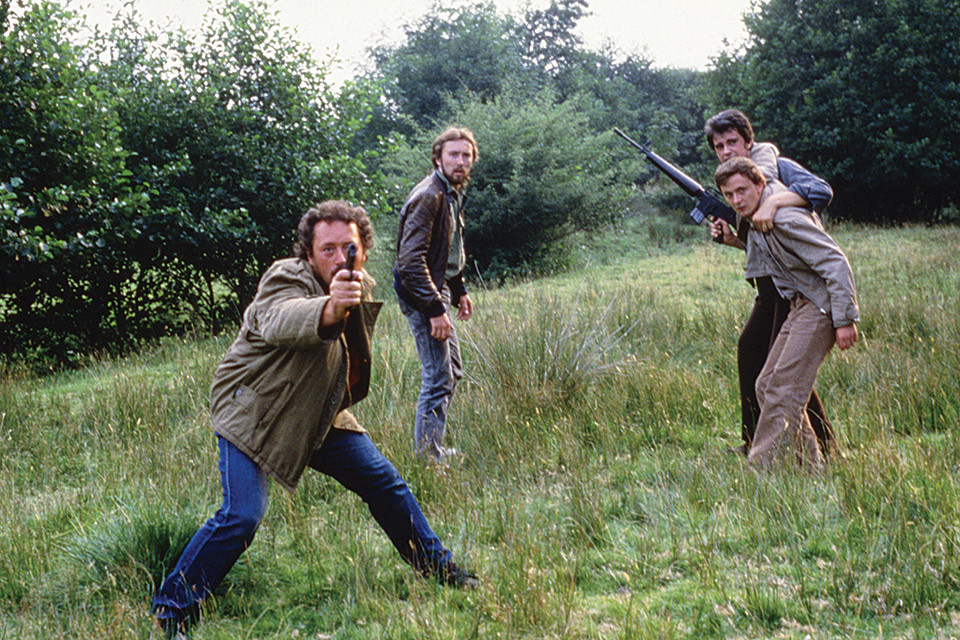
Contact
In Elephant (89), Clarke’s “anti-” game would be on point: antiwar, anti-Troubles, anti-violence, anti-complacency, anti-narrative. It’s one thing to describe this landmark protest movie as a series of murders and assassinations presented without commentary, and it is another to actually witness men—it is all men—pitilessly gunned down in service stations, car parks, public pools, warehouses, restaurants, living rooms, and, in one case, a soccer field. Catholic, Protestant, Irish, English, cause, no cause—it doesn’t matter. Dead is dead. The performance-art aspect of the whole endeavor is not desensitizing; in fact, it’s the opposite. You can watch Elephant dozens of times and still feel scraped raw every time at the sheer waste of life. Even Clarke’s hard-man fans can’t help but feel as if they’ve been gut-punched.
After you’ve seen the full breadth of his television back catalog, it’s instructive to return to those three seminal tough-guy works, the ones that still come to mind first and foremost when Clarke’s name is mentioned. As with Picasso, who was just as capable of painting photorealistic portraits before deep-diving into Cubism, Clarke’s ability to play it straight if he wanted to made the daring gambits that much more impressive. If you’ve only seen the theatrical version of Scum, it’s interesting to note how that version opens on Ray Winstone’s Carlin, establishing him immediately as our cellblock Candide, hewing close to a standard how-to-succeed-in-prison narrative à la Denmark’s R, France’s A Prophet, or the United Kingdom’s Starred Up, to name just three. The original version opens instead on Davis, the younger convict, being chased down by cops in a car and corralled in a field—rather than identify with the man who will be “Daddy,” we’re left sympathizing with the kid who never had a chance.
And while Made in Britain still thrums with Roth’s mondo charismatic performance and bared canines, the scene that now sticks with you isn’t Trevor acting out or acting smart but him being lectured by a cynical social worker about the endless cycle he’s caught in: a chalkboard tour of courts, assessment centers, the dole, thievery, prison, back to crime, and back to the courts. As we’ve watched Clarke take on power struggles and vicious cycles over his career up to this point, we start to understand more how hopeless the individual versus the System really is; in context, the movie’s fights become the end instead of the means, a gesture that’s better than no gesture at all. Then comes The Firm, and even “the buzz” of hooligan violence starts to recast itself as a closed-circuit reaction against material emptiness. “This is what England is all about!” screams one of Oldman’s acolytes, as the dream of a “national firm” (the term denoting an official fan club/gang) becomes a reality. But nothing has changed. In all of these films, it dawns on you that in the end, the house wins. The house always wins.
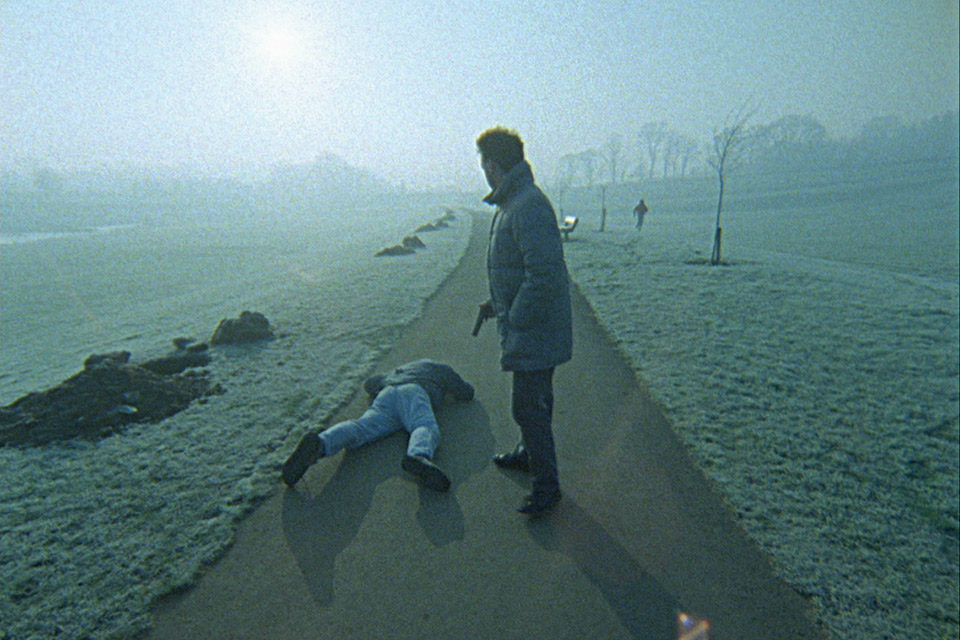
Elephant
Best you end your Clarkeology 101 tour with Road (87). Made for the Screenplay series, his adaptation of Jim Cartwright’s stylized play about Northern no-hopers features plenty of virtuoso Steadicam shots, a show-stopping apocalyptic monologue by Lesley Sharp, and the best use of music in any of Clarke’s works. Eventually, the two brothers and two women out on the town we’ve been following end up at in a dilapidated building, desperate to make a physical connection but unable to break through their malaise. Then one of them suggests something: “You drink, you listen to Otis [Redding], and you get to the bottom of things!” Redding’s “Try a Little Tenderness” plays almost en toto as the men vibrate with excitement. The hopes, fears, and frustrations of this quartet, all of which might be shared with Britain then, or all of us now, pour forth. A connection is made. The movie ends with its characters chanting: “If I keep shouting, I might escape.” It’s a transmission of hope, yelled up at the sky. Then the sound dies down and Clarke holds on a silent overhead shot of these folks for seconds on end. Hope screams eternal. Fade out.
IN FOCUS: A 13-disc Blu-ray set and two DVD volumes of Alan Clarke’s work will be released by the BFI on May 23.
David Fear is a regular contributor to FILM COMMENT and Rolling Stone.



